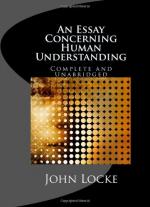21. No two Parts of Duration can be certainly known to be equal.
But perhaps it will be said,—without a regular motion, such as of the sun, or some other, how could it ever be known that such periods were equal? To which I answer,—the equality of any other returning appearances might be known by the same way that that of days was known, or presumed to be so at first; which was only by judging of them by the train of ideas which had passed in men’s minds in the intervals; by which train of ideas discovering inequality in the natural days, but none in the artificial days, the artificial days, or nuchthaemera, were guessed to be equal, which was sufficient to make them serve for a measure; though exacter search has since discovered inequality in the diurnal revolutions of the sun, and we know not whether the annual also be not unequal. These yet, by their presumed and apparent equality, serve as well to reckon time by (though not to measure the parts of duration exactly) as if they could be proved to be exactly equal. We must, therefore, carefully distinguish betwixt duration itself, and the measures we make use of to judge of its length. Duration, in itself, is to be considered as going on in one constant, equal, uniform course: but none of the measures of it which we make use of can be known to do so, nor can we be assured that their assigned parts or periods are equal in duration one to another; for two successive lengths of duration, however measured, can never be demonstrated to be equal. The motion of the sun, which the world used so long and so confidently for an exact measure of duration, has, as I said, been found in its several parts unequal. And though men have, of late, made use of a pendulum, as a more steady and regular motion than that of the sun, or, (to speak more truly,) of the earth;—yet if any one should be asked how he certainly knows that the two successive swings of a pendulum are equal, it would be very hard to satisfy him that they are infallibly so; since




